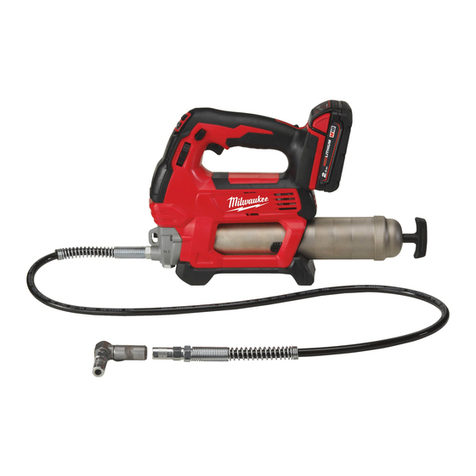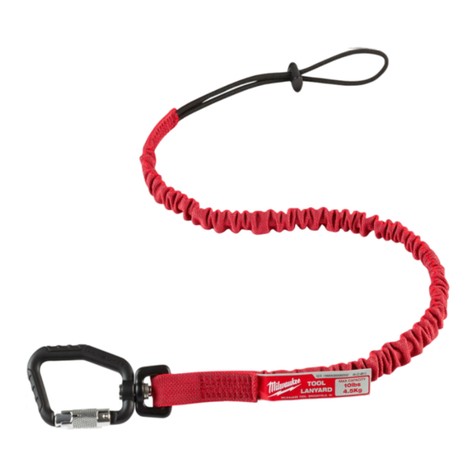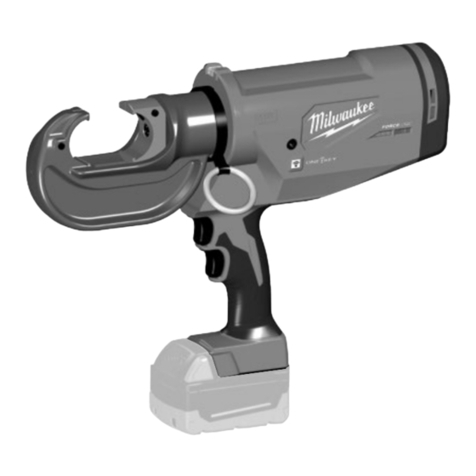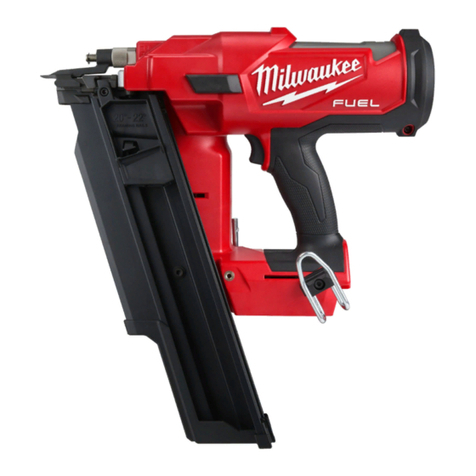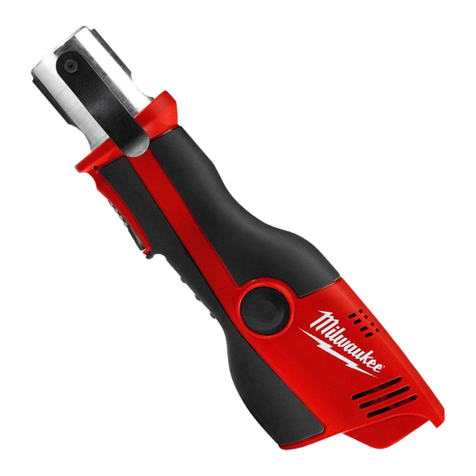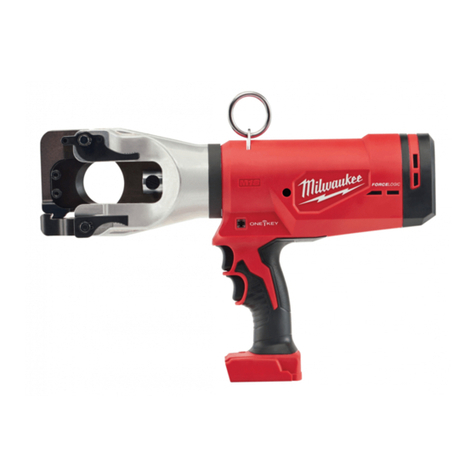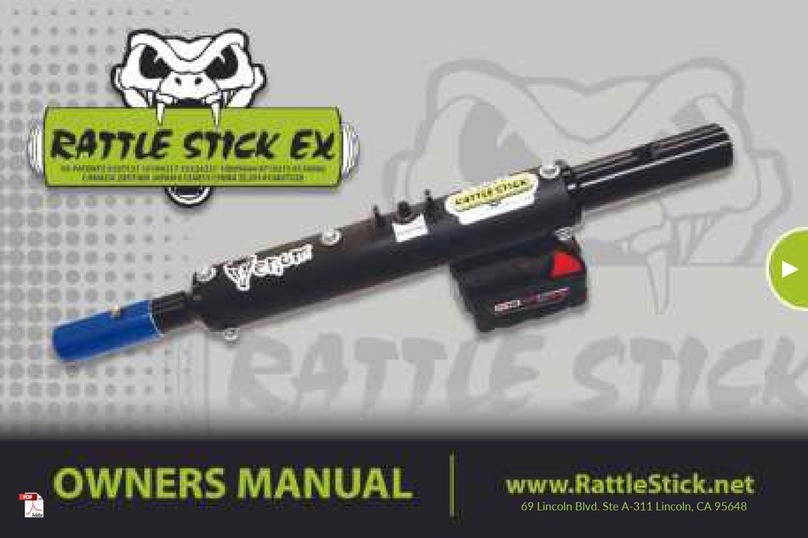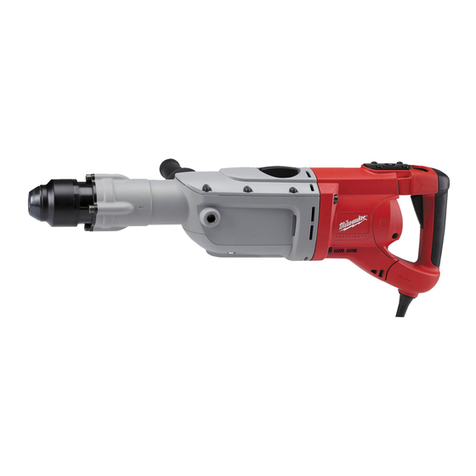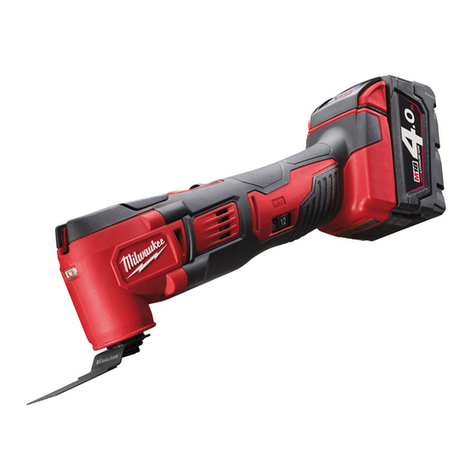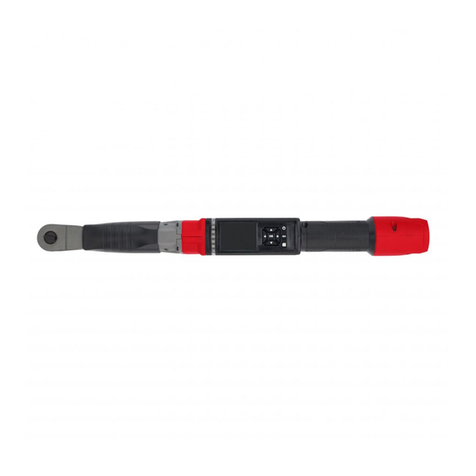
8
English
8
TECHNICAL DATA M18 CHM
Battery voltage 18 V
No-load speed 0-450 min-1
Rate of percussion under load max. 0-3000 min-1
Impact energy per stroke accordng to EPTA-Procedure 05/2009 6.1 J
Chuck neck diameter 66 mm
Drilling capacity in concrete 40 mm (SDS-max)
Tunnel bit in concrete, bricks and limestone 65 mm (SDS-max)
Core cutter in concrete, bricks and limestone 100 mm (SDS-max)
Weight according EPTA-Procedure 01/2003 (Li-Ion 9.0 Ah) 6.6 kg
Noise/vibration information
Measured values determined according to EN 60745.
Typically, the A-weighted noise levels of the tool are:
Sound pressure level (K = 3 dB(A)) 93.6 dB(A)
Sound power level (K = 3 dB(A)) 104.6 dB(A)
Wear ear protectors!
Total vibration values (vector sum in the three axes) determined according to EN 60745.
Vibration emission value ah, HD
Hammer-drilling in concrete 10.6 m/s2
Uncertainty K 1.5 m/s2
Vibration emission value ah, Cheq
Chiselling 9.6 m/s2
Uncertainty K 1.5 m/s2
WARNING!
The vibration emission level given in this information sheet has been measured in accordance with a standardised
test given in EN 60745 and may be used to compare one tool with another. It may be used for a preliminary
assessment of exposure.
The declared vibration emission level represents the main applications of the tool. However if the tool is used for
different applications, with different accessories or poorly maintained, the vibration emission may differ. This may
significantly increase the exposure level over the total working period.
An estimation of the level of exposure to vibration should also take into account the times when the tool is
switched off or when it is running but not actually doing the job. This may significantly reduce the exposure
level over the total working period. Identify additional safety measures to protect the operator from the effects of
vibration such as: maintain the tool and the accessories, keep the hands warm, organisation of work patterns.

